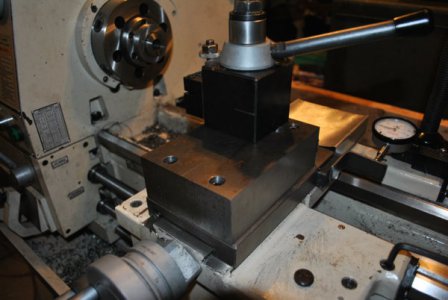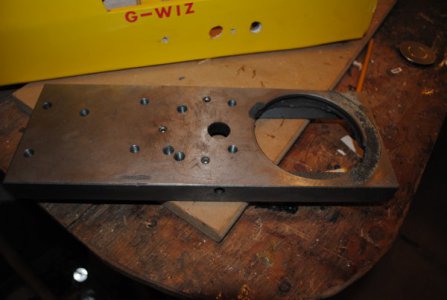- Joined
- May 21, 2016
- Messages
- 9
I have a G4016 Grizzly lathe which is a 13 1/2 x 40 " lathe. I am trying to cut off or part 3" aluminum bar stock. While I am able to do so succefully with a 1/2 x 1/8" blade it is not very fast. Ive cut reliefs in the blade and whittled away a larger path for the blade but I break blades and spend quite a bit of time getting what I want for a finish on the back side. I also have a need to make a number of this one particular item that makes its a pain to remove this and cut it on a band saw let alone finishing the back side of the material as well.
Do any of you have any simple ideas for a larger tool post. I was thinking about buying a larger tool post and making a bottom tensioner plate threading it to fit the new tool post and then buying a parting tool holder for this. I only need it for parting as I am happy with all other functions of my lathe so far any way.
Another Idea I had was to make a tool holder that will support a cut off blade that is 3/4" tall and attempt that but this is fairly complex for my new skill levels I do have a really nice mill and would probably learn a lot making one but I also want to make sure I have the correct fit of my blade. Exploding a larger blade because Ive made something that does not support the blade correctly is a concern as well. I do believe my lathe is large enough that I have the room to still get a larger parting tool in the correct position for proper cutting but that is just what my thought is.
Or am I looking for something that cannot be done on this size of a lathe. Thanks in advance
Do any of you have any simple ideas for a larger tool post. I was thinking about buying a larger tool post and making a bottom tensioner plate threading it to fit the new tool post and then buying a parting tool holder for this. I only need it for parting as I am happy with all other functions of my lathe so far any way.
Another Idea I had was to make a tool holder that will support a cut off blade that is 3/4" tall and attempt that but this is fairly complex for my new skill levels I do have a really nice mill and would probably learn a lot making one but I also want to make sure I have the correct fit of my blade. Exploding a larger blade because Ive made something that does not support the blade correctly is a concern as well. I do believe my lathe is large enough that I have the room to still get a larger parting tool in the correct position for proper cutting but that is just what my thought is.
Or am I looking for something that cannot be done on this size of a lathe. Thanks in advance



